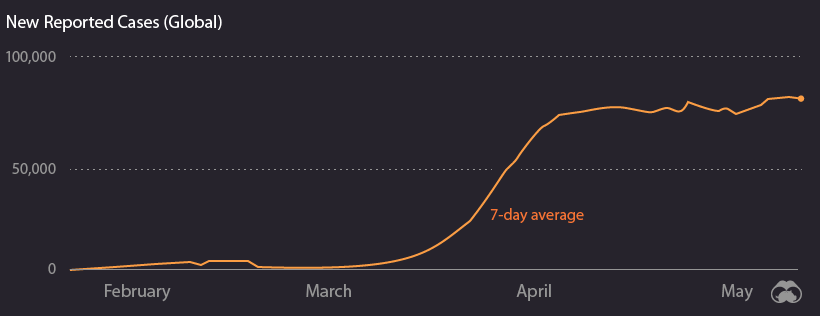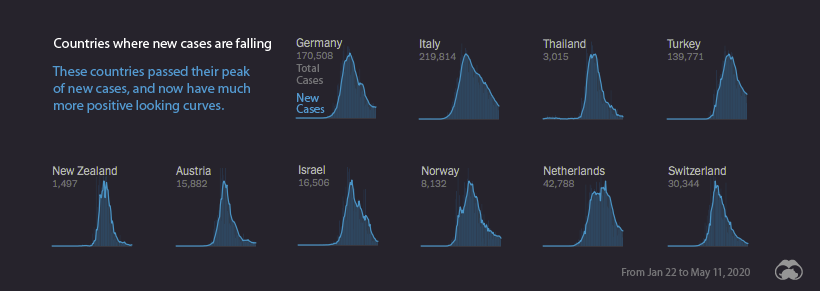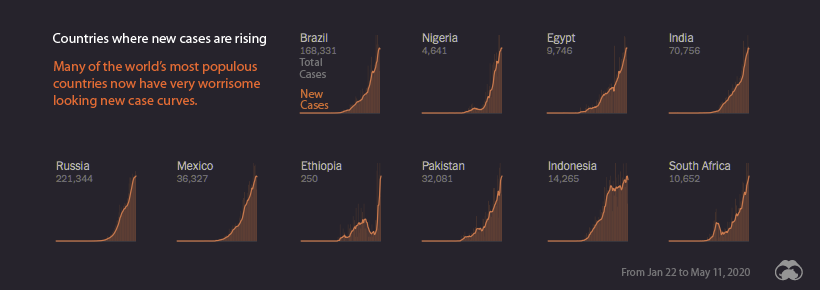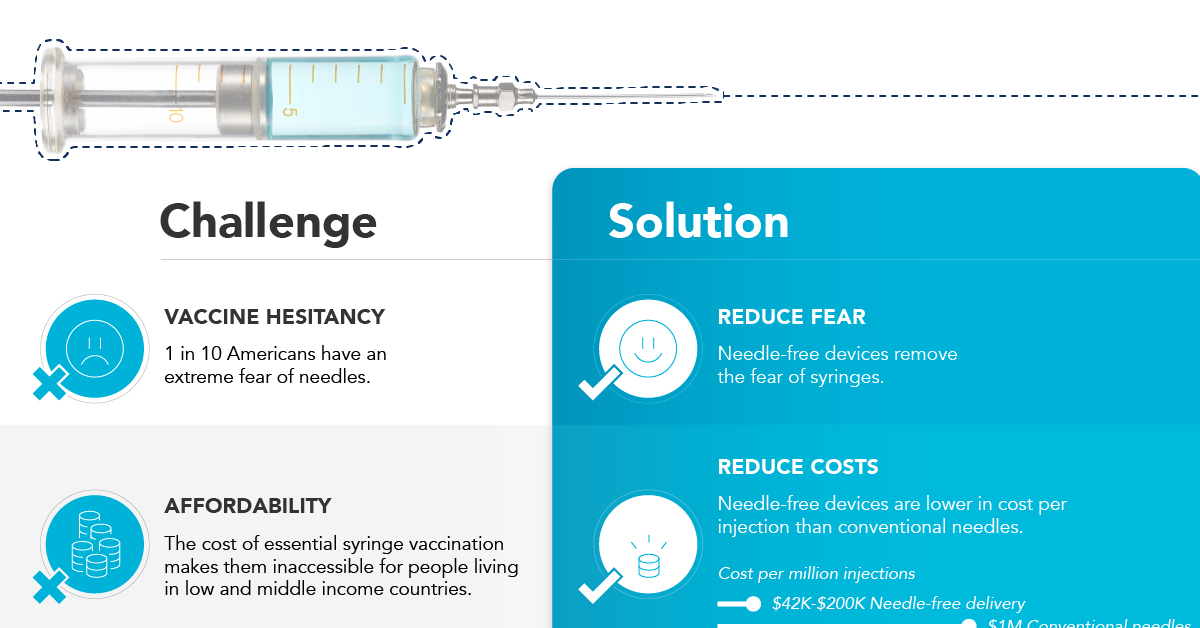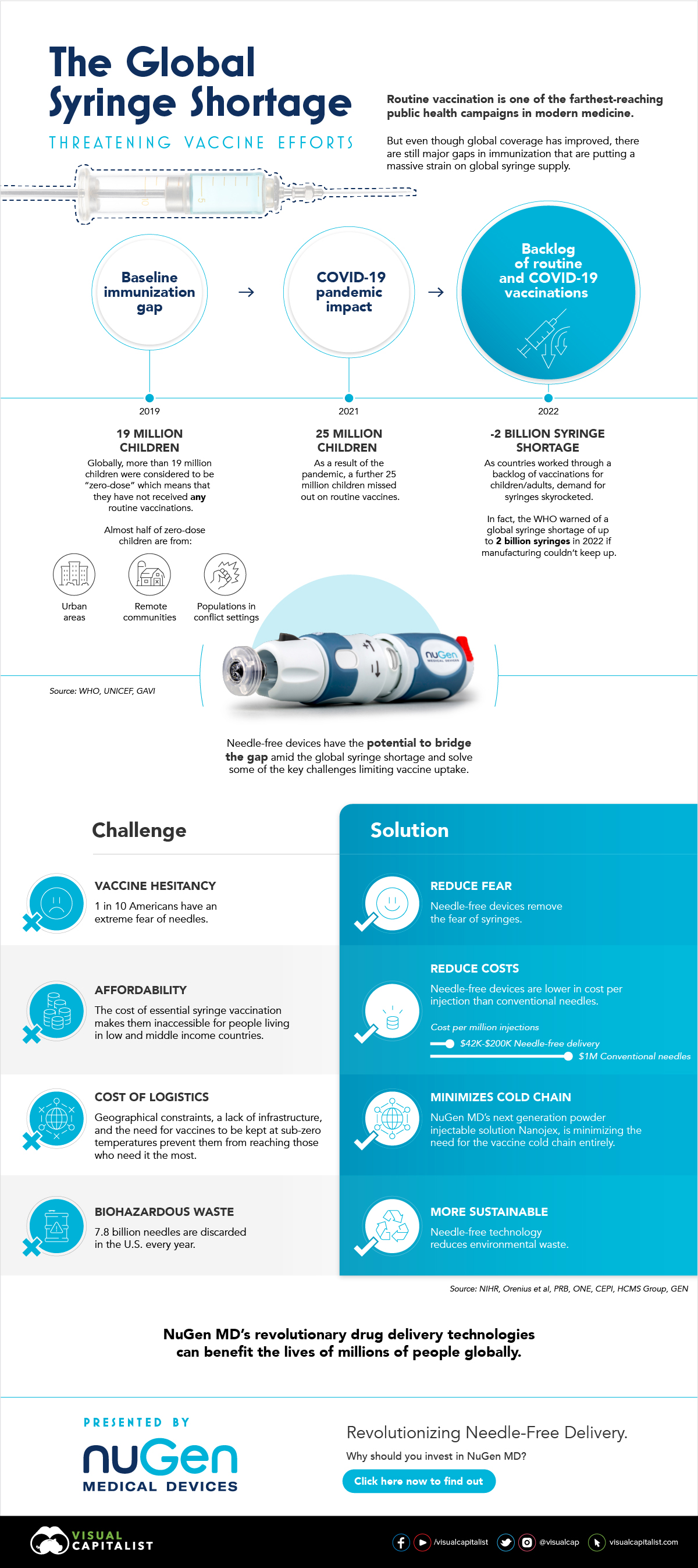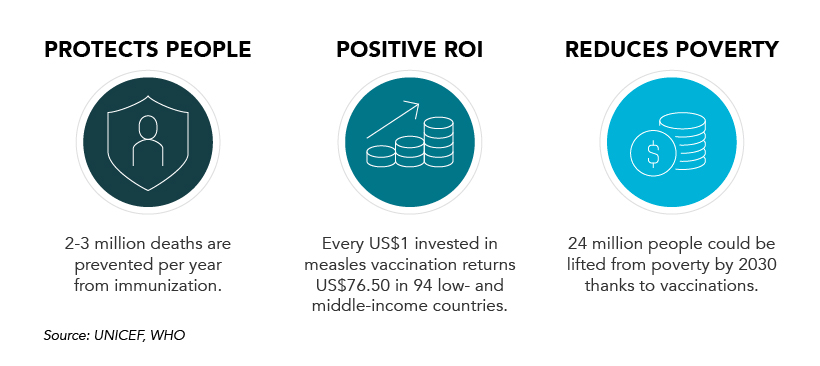Since then, we’ve seen detailed, daily coronavirus coverage in most of the major news outlets. With such a wealth of information available, it can be hard to keep track of the big picture of what’s happening around the world. Today’s graphic, adapted from Information is Beautiful, is an efficient look at where the virus is fading away, and where new infection hotspots are emerging.
The Ebb and Flow of Coronavirus Cases
First, the good news: the number of new confirmed COVID-19 cases has started to level off on a global basis. This metric was rising rapidly until the beginning of April — but since then, it has plateaued and is holding steady (for now).
Of course, the global total doesn’t tell the whole story. Different countries, and even regions within countries, are in very different phases of dealing with the pandemic. Let’s look at the current situation around the world.
New Cases: Falling
Many of the countries that experienced early outbreaks of COVID-19 are now seeing a drop-off in the number of new cases.
Italy, which experienced one of the most severe outbreaks, is finally emerging from the world’s longest nationwide lockdown. Switzerland and the Netherlands both had some of the highest confirmed case rates per capita, but are now in better situations as fresh cases drop off. The narrow, pointy curves exhibited by New Zealand and Austria give us an indication of where containment measures were successful at curbing the spread of the virus. This type of pronounced curve is less common, and is generally seen in nations with smaller populations.
New Cases: Leveling Off
For many of the world’s major economies, containing the spread of the virus has proven exceptionally difficult. Despite increased testing and lockdown measures, the United States still has one of the steepest infection trajectory curves. The UK also has a very similar new case curve.
Even as countries’ curves begin to flatten and level off, there is still a danger of new flare-ups of the virus – as is now the case in South Korea and China. Even in Singapore, which saw early success in containing the virus, is experiencing a rise in new COVID-19 cases.
New Cases: Rising
Some countries – particularly developing economies – are only in the beginning stages of facing COVID-19’s rapid spread. This is a cause for concern, as many of the countries with steeply rising curves have larger populations and fewer resources to deal with a pandemic.
In late March, as the virus was spreading rapidly through Europe, Russia appeared to have avoided an outbreak within its borders. Today, however, that situation is much different. Russia has the world’s steepest infection trajectory curve, with the number of cases on a course to double roughly every five days. The countries in the image above have a combined population of 2.8 billion people, so as COVID-19 continues to spread through those countries, the eyes of the world will be watching. on In the above infographic from NuGen Medical Devices, we explore the factors leading to the syringe shortage and take a look at the company’s innovative needle-free solution that could play an important role in closing the immunization gap.
The Immunization Gap
Even before the COVID-19 pandemic, millions of people around the world struggled to get access to routine vaccinations. In fact, as of 2019 more than 19 million children around the world were considered to be “zero-dose” which means that they did not receive any routine vaccinations. Moreover, when the COVID-19 pandemic hit, global immunization dropped even further with 25 million children missing out on routine vaccines in 2021 alone.
Why is Immunization So Important?
Vaccinations prevent against over 20 life-threatening diseases and save between 2-3 million deaths per year, making them—as the WHO describes—the foundation of healthcare systems and an indisputable human right. As countries work through a backlog of vaccinations to close the immunization gap that has worsened since the pandemic, demand for syringes has significantly increased.
The Result: A Global Syringe Deficit
In 2022, the WHO warned that we could see a shortage of up to 2 billion syringes if manufacturing can’t keep up. This could result in the severe disruption to routine vaccinations and promote unsafe recycling of syringes in order to administer vaccines. But the issue goes far beyond a supply shortage of syringes. COVID-19 has brought conventional syringe vaccines into sharp focus, with many criticizing the challenges associated with them. With conventional needles facing so many challenges, it’s no surprise that investors are taking interest in viable alternatives. What’s more, these alternatives don’t just apply to vaccinations, they can also work for people with diabetes, dentists, and pet care.
Enter Needle-free Devices from NuGen MD
Needle-free devices have the potential to bridge the gap in immunization amid the global syringe shortage, solve some of the key challenges limiting vaccine uptake, and more importantly, benefit the lives of millions of people.
How Do They Work?
NuGen’s needle-free devices use a simple spring-loaded mechanism which uses pressure to release the liquid drug and penetrate the skin. In less than one-tenth of a second, the drug is dispensed more safely and evenly compared to needle syringes. It’s also virtually painless and leaves no mark on the skin.
Interested in investing in NuGen Medical Devices? To learn more about their plans to pioneer the future of needle-free drug delivery, click this link now.
